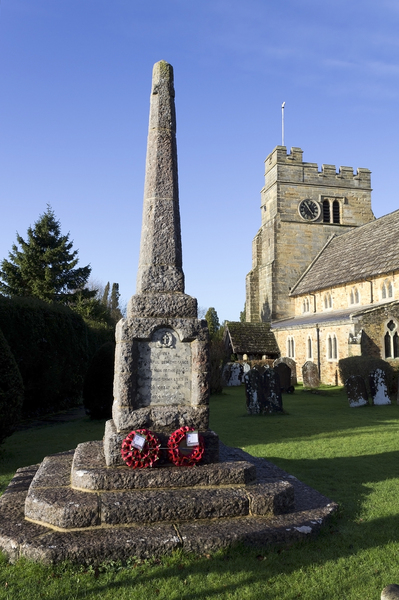
The use of religious language and imagery in the memorialisation of the First World War helped to transform the fact of mass death and slaughter into the memory of brave and meaningful sacrifice. Christian iconography provided the predominant method of memorialisation, in both popular and official capacities. Despite the lack of focus on religion in much of the historiography surrounding the conflict, the ways in which the Great War is commemorated are dominated by religious language and imagery. According to some interpretations, the appropriation of Christian iconography by the state in its attempts to commemorate the war dead represented the efforts of a calculated union between church and nation to transcend the horrors of the war, and present to the grieving British population a more sanitised and justifiable version of the conflict. Rather than confronting the reality of the war, the fallen soldiers were ‘made sacred’ through the process of memorialisation. Articulated by authors and poets whose lives were profoundly changed by the events of 1914 - 1918, this idea has permeated throughout the historiography of the First World War.
However, it is my contention that during and after the war there was an instinctive and popular reach for the language and imagery of religion to express and come to terms with the British public’s grief and losses in the war. The universality of mourning and bereavement in Britain during and after the Great War created the need for a response to the mass grief prompted by mass death; religious iconography provided a palliative language of comfort and reassurance for the bereaved. Approximately six million men from the United Kingdom fought in the First World War, and around one in eight were killed. Some 722,785 British citizens died as a direct result of the war, and over one million from the Empire as a whole. Of the men aged between twenty and twenty four in 1914, 30.58 per cent died, and of those aged thirteen to nineteen, 28.15 per cent were killed. Grief and bereavement came to almost every family in the country.[1] In the search for a language to express the loss, grief and bereavement coursing through Britain, Christian tradition was the natural place to turn. Widespread pre-war church attendance, the prevalence of religious education and general familiarity with the Bible and its teachings provided the bereaved with an easily recognisable language of loss and comfort. The use of Christian language and imagery were to become an enduring feature in memorials of the conflict, both physical and rhetorical.

British war memorials; the Cenotaph and the Tomb of the Unknown Warrior in London, along with smaller local memorials, provide evidence of the popularity of religious forms in commemoration of the war. However, it is clear that official efforts of the church and state were not always capable of satisfying the wants and needs of all sections of the public. Popular religiosity; a grassroots, instinctive religious feeling was the prevalent characteristic of religious expression during and after the war, rather than orthodox Church of England doctrine. The unofficial shrines that sprang up across London from as early as 1914 are proof of a religious feeling and a desire to remember loved ones in religious and local terms not necessarily affiliated with Church of England orthodoxy or national forms of remembrance.
Religious language was also a source of comfort to families who lost loved ones, or feared for their loved ones safety. The government and other secular institutions recognised the effectiveness of religious language and imagery, first in mobilising the nation for war and maintaining morale, and later in comforting the bereaved and finding meaning in the mass death. Religious imagery can be found in secular speeches and the press; with the mobilisation of men came a mobilisation of a tradition of high diction which added weight and gravity to some secular exhortations and brought them into the realm of the sacred. Language of sacrifice was widely employed to give meaning to the slaughter of soldiers in the war, and this became an enduring image of the conflict, constantly reiterated in speeches, sermons, literature and memorials.
In the use of religious language and imagery, the state was able to memorialise the war in terms of a sacred experience; through the peaceful beautiful cemeteries and memorials, and the high diction which raised the fallen soldiers to the status of saints and martyrs. By some interpretations this represented a calculated sanctification of the horror of war, lifting memory of the conflict above and away from its reality. However rather than an imposition of the state’s will upon a bereaved and grieving nation, the use of Christian iconography in response to the war can also be regarded as a necessary step in the bereavement process, the result of a popular desire for comfort and consolation as thousands across the United Kingdom attempted to come to terms with the loss of their sons, husbands, brothers and fathers in the Great War.

[1] David Cannadine, ‘War and Death, Grief and Mourning in Modern Britain’, in Joachim Whaley (ed.), Mirrors of Mortality: Studies in the Social History of Death (London, 1981), p. 197.